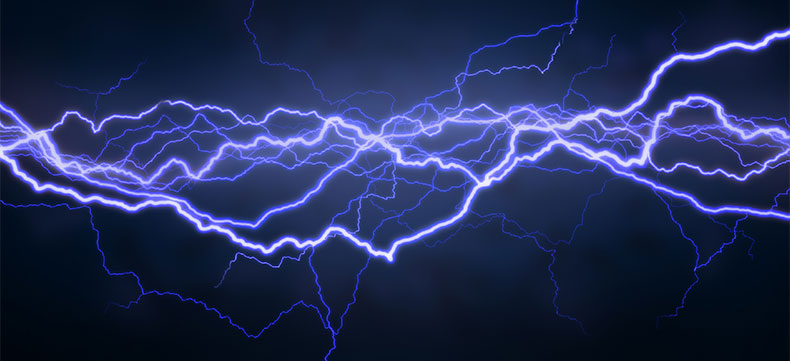Your home is your safe haven, and National Electric Safety Month is a good time to learn about a relatively new technology that helps to keep your home safe from an electrical fire caused by an arc fault. An arc fault is an unintended arc created by current flowing through an unplanned path; arcing creates high intensity heating at the point of the arc, resulting in burning particles that may easily ignite surrounding materials, such as wood framing or insultation. Arc Fault Circuit Interrupters (AFCI) are designed to detect a wide range of arcing electrical faults, protect the circuit, and prevent fires from occurring.
Unlike standard circuit breakers that detect overloads and short circuits, AFCI use advanced technology to recognize different arcing conditions, categorize them as normal or dangerous, and de-energize the circuit when they are dangerous. Branch Feeder Breaker AFCI are installed at the origin of a branch circuit or feeder, such as at a panelboard. Combination Breaker AFCI are designed to detect lower level arcing in both branch circuits and power supply cords.
Beginning in 2014, AFCI started being required for most branch circuits in a house, protecting every room in the house except the garage and exterior. It’s important to note that part of this code now requires all receptacle outlets being installed or replaced meet modern AFCI requirements, no matter the age of the home. It could add cost to your wiring projects, but it should keep you safer from electrical fires. It’s a good idea to know if your home’s electrical system includes AFCI.
Electrical Fire Safety Rules: Your First Line of Defense
You should consider AFCI the second line of defense, and these general rules your family’s first line of defense. Please follow them for a safer home environment:
- Avoid overloading extension cords, sockets and plugs
- Never attempt electrical repair or rewiring without proper certification and experience
- Never force a three-prong plug into a two-receptacle socket
- Replace any light switches that are hot to the touch
- Extension cords should only be used on a temporary basis, should be in good condition and the proper length and weight for the task
- Appliances that generate heat such as TVs and computers should be given several inches of clearance all around for good air circulation and cooling
- Use bulbs that have the correct wattage requirements for each fixture


